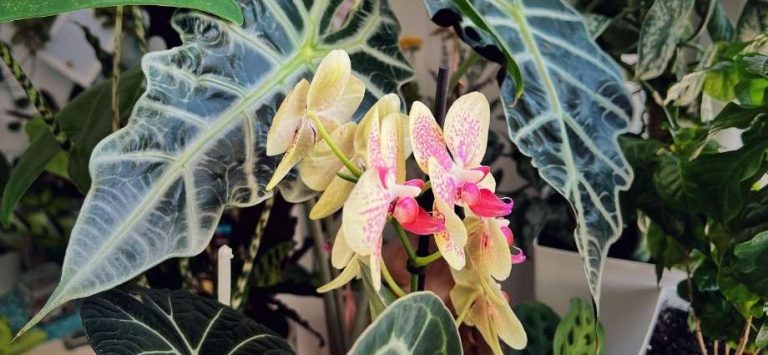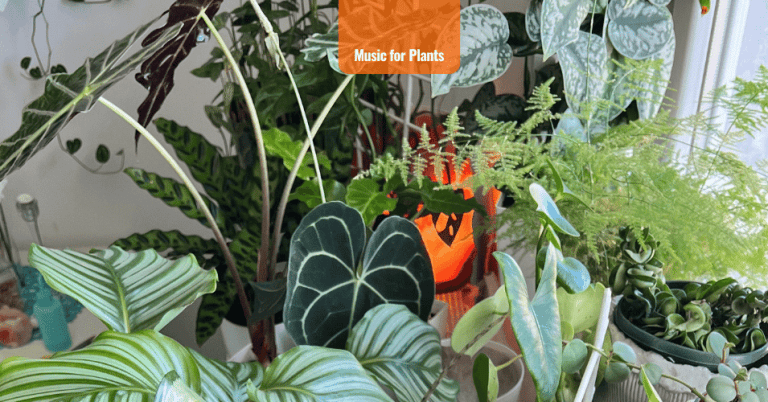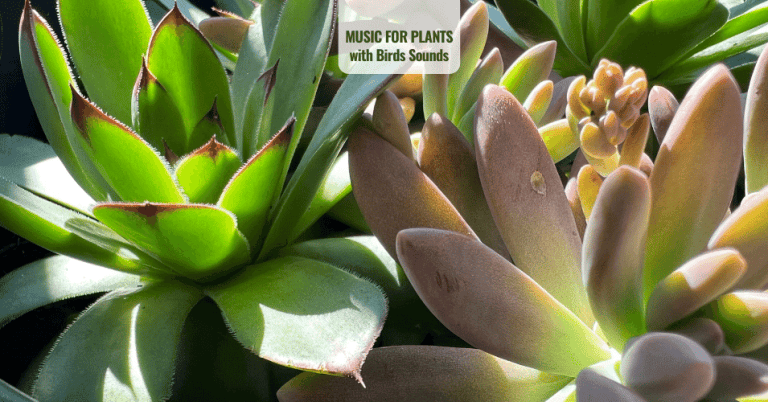Plant Growth Music: 432 Hz Frequency for Healthy and Happy Plants
Are you curious about how sound frequencies can impact the growth and health of your houseplants? Studies have shown that specific sound frequencies, particularly those in the range of 432 Hz, may benefit plant growth and even overall vitality. Plant growth music for plants has gained attention from gardeners and plant enthusiasts who are exploring ways to create an environment that supports and enhances plant well-being. In this article, we’ll discuss the science behind using music for plant growth, how to incorporate 432 Hz music into your plant care routine, and why this frequency, in particular, may foster healthier, happier plants.
What is 432 Hz Music and Why is it Beneficial for Plants?
The frequency of 432 Hz has been noted for its soothing effects on both plants and people. It is said to promote balance and harmony, helping plants to grow stronger by supporting their cellular functions. Sound waves, like those in 432 Hz music, create subtle vibrations that may aid in root development and nutrient absorption, which are essential for growth. Plant growth music, particularly at 432 Hz, resonates with the natural rhythm of plants, helping them to grow in a peaceful and relaxed environment.
Many believe that this frequency is closer to the natural vibrations found in nature. Unlike some other frequencies, 432 Hz is thought to align with the Earth’s frequency, potentially promoting a sense of unity and balance in the space where it’s played. For plant lovers, this harmonious frequency could become a valuable tool in cultivating a thriving indoor garden.
How Plant Growth Music Works
When you play plant growth music in the background, the vibrations interact with the plant’s cells. This may stimulate growth, encourage stronger roots, and improve nutrient intake. Some researchers suggest that frequencies like 432 Hz might affect water movement within plant tissues, facilitating nutrient distribution and boosting photosynthesis. While more studies are needed, many plant parents have noticed positive changes in their plants’ overall health and appearance after introducing 432 Hz music into their care routine.
The low, calming vibrations of 432 Hz music can be especially beneficial in helping stressed or slow-growing plants. Indoor plants often face challenges, such as limited sunlight or low humidity. Playing 432 Hz plant growth music for your houseplants might help them adapt more comfortably to indoor conditions, fostering a healthier environment. Read more about how 432 Hz works on plants.
Tips for Using 432 Hz Plant Growth Music with Your Houseplants
If you’re ready to try 432 Hz plant growth music, you’re in luck! My channel, Plant House & Garden, publishes plant growth music designed specifically for plants. I have a dedicated playlist on YouTube featuring more than 50 carefully selected tracks tuned to 432 Hz, each tested on my own plants. The results have been incredible—my plants are thriving with fuller leaves, vibrant colors, and a noticeable boost in growth. Here is the link to the Music for Plants Playlist, where you can choose the music you like and start a relaxing journey for both you and your plants.

Create a Relaxing Atmosphere
Plants respond well to calm, peaceful environments. You can create a zen-like space for both you and your plants by setting up a corner with soft lighting, greenery, and plant growth music. This combination benefits not only the plants but also creates a space where you can relax and reconnect with nature.
Experiment with Different Plants
Not all plants react the same way to music, so try the 432 Hz frequency with a variety of houseplants to see which ones respond best. You might notice increased growth in plants with broad leaves or those that are typically slow growers. Document any changes in leaf color, size, or overall health.
Maintain a Consistent Routine
Consistency is key to seeing the benefits of 432 Hz plant growth music. Try to play it for your houseplants at the same time each day or week, building a routine that mimics natural rhythms. Regular exposure may gradually lead to visible improvements, such as fuller foliage and vibrant colors.
Observe and Record Results
Each plant is unique, so take note of any changes over time. Record how often you play the music and any visible results, such as new growth or leaf development. This helps you understand which plants respond best to the music and how it impacts their overall health.
Benefits of Using Plant Growth Music in Your Indoor Garden
Playing music for houseplants offers a range of benefits beyond growth enhancement. The calming vibrations of plant growth music can create an atmosphere that feels alive and harmonious. This may reduce the risk of stress on your plants caused by environmental changes or other growth challenges. Additionally, plant growth music in 432 Hz can contribute to:
- Improved Growth Rate: Frequent exposure to harmonious vibrations may accelerate plant growth, helping your plants reach maturity faster.
- Increased Resilience: Healthier plants often have better natural defenses, making them less susceptible to pests and disease.
- Enhanced Photosynthesis: Vibrations from music, particularly at lower frequencies like 432 Hz, can boost photosynthetic activity, giving plants more energy to thrive.
- Peaceful Home Environment: This frequency is soothing for people as well, creating a more relaxed space for everyone in the household.
Final Thoughts
Incorporating 432 Hz plant growth music into your houseplant care routine could bring out the best in your plants while also adding a calming atmosphere to your home. Whether you’re an avid plant parent or just starting out, this gentle method of nurturing plants aligns beautifully with nature’s rhythms. So go ahead, give it a try, and let your plants soak in the harmonious vibrations of 432 Hz.
For visual instructions and to experience the effects of 432 Hz on your plants firsthand, be sure to check out the video accompanying this post. This frequency could be the missing element to help your plants grow healthier, happier, and more resilient.
Explore More Music for Your Plants & Stay Connected!
Check out my Playlist: Music for Plants and find the perfect tunes to help your plants and yourself thrive.
Don’t forget to visit my YouTube Channel Plant House & Garden and subscribe — your support means the world to me!
Connect with me on social media for more plant care tips and music updates: Instagram | Facebook | X | Pinterest | Reddit | TikTok
Love plants? Love music? Don’t miss out on new updates — hit subscribe and follow now to keep your plants happy and your space vibrant!







